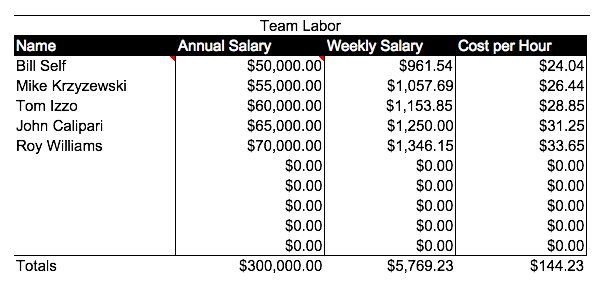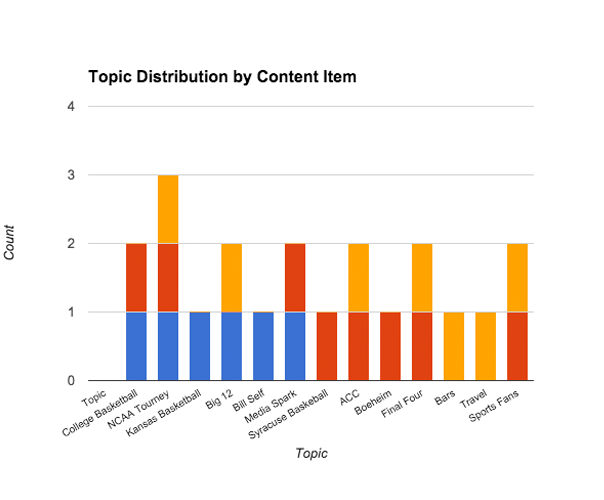The Internal Metrics of Content Marketing
The topic of content marketing metrics is hot these days. Marketers across the globe are looking for tips, tricks and insights (and the magic bullet dashboard) that will help us connect the dots between content and revenue. There’s certainly no shortage of resources online (including our latest ebook) that can help provide some guidance, but most only focus on one side of the metrics coin: the external performance of the content itself.
How many pageviews/clicks/downloads/retweets/etc. did we get? And there’s certainly the million dollar question… How much revenue was generated from our content?
There’s no argument here that the external performance of our content, and trying to tie those assets back to revenue, is of utmost importance. But what about the other side of the coin? Ask any business owner how to run a successful business and they’ll tell you it boils down to two things:
- Make money
- Manage expenses.
When digital and social media marketing started demonstrating their effectiveness in the early 2000s, a misconception arose regarding the inexpensive nature of these new mediums. The new methods of using owned channels to reach customers became very attractive, but we’ve also learned that these tactics are certainly not without cost. Executing a variety of digital, email and social marketing initiatives often requires a significant investment in people, time and tools. So here’s the question that we pose to you…
Are you paying attention to the internal metrics that track the cost of your content and the performance of your team?
The Internal Metrics of Content Marketing
1. Content Output
When trying to get a handle on your internal metrics, sometimes it’s best to start simple by getting a baseline of historical content publishing output. On average, how much content are we publishing per day/week/month via our main channels or properties? A quick audit may provide some interesting insights. Sidenote: If this analysis is hard to compile, perhaps you should be using DivvyHQ (wink). We make this easy.
From here, it may make sense for you to start setting goals for the number of content items you wish to produce at a weekly or monthly cadence. Monitor or report your production against said goal and calculate the deltas (or difference between them.) Not only will this metric show you total content generated, it will also show how consistent the team is at generating content on a defined cadence. For more granularity, drill down further to see output within each channel. Here is an example of how the NCAA coaches might track their content contributions over a month.

Knowing the volume and cadence of your content production is a strong baseline in understanding its quality.
2. Production Efficiency
Trying to cut production costs? Perhaps you need more efficiency from your team? Track hours logged on each piece of content vs. hours planned. You can attach a cost per hour for each team member and then track to total cost of production for each item.

3. Content ROI Goals
The chart above starts us down a path to determine the overall cost of each piece of content we produce. Without this calculation, the content ROI conversation is pointless. Once costs are nailed down, some discussion should be had surrounding the amount of return each piece of content is expected to deliver. Let’s look at a recent DivvyHQ ebook as an example. All in, our ebook cost about $15K to produce and promote. Our ROI goal is 3x our cost in 3 months. In other words, we expect our ebook to result in at least $45K of new account activations over a period of 3 months. This same type of formula can be used to calculate the ROI of such smaller assets as blog posts, web pages, etc., but the important first step is nailing down costs.
4. Content Strategy Gap Analysis
Man to man or zone defense? When a coach develops a game plan for its opposition, he or she typically studies its opponent’s strengths and weaknesses ad nauseam. The coach then “finds the gaps” or areas where his team is better than the opponents and develops strategies to mitigate exposure to weaknesses. This same “game plan” can apply to the management of your content.
When is the last time you’ve conducted a gap analysis of your content? Do you watch your content analytics to get targeted data? Do you regularly audit your content for surplus or deficiencies in topics, audience or important keywords? A simple internal metric could be the number of content pieces per month targeted for your college basketball fans. Or perhaps the number of content pieces per month segmented to the topic or keyword bracketology. Establishing these content strategy “goals” then gives us an opportunity to track our progress and ensure we’re aligned with our content strategy.


Start With a Goal
Together this should give you a holistic view into the internal metrics of your content and the performance of your team. Use together or use individually, but always remember to start with the end result or goal and work your way through the details. Monitoring these metrics will certainly help get you there!
Shameless-Plug Time
DivvyHQ is more than just an editorial planning and workflow solution. It allows you to easily house all your content in one simple, unifying platform, making it easy to monitor the aforementioned metrics and conduct insightful audits. Regular monitoring will ensure your existing content and future editorial plan falls inline with your holistic content strategy.

